Research projects (ongoing) by DENI RUGGERI
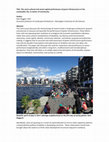
This short essay discusses the shortcomings of recent trends in landscape architecture research a... more This short essay discusses the shortcomings of recent trends in landscape architecture research and practice to measure and quantify the performance of green infrastructure. These efforts have until now placed greater emphasis on ecological and economic quantitative indicators, rather than socio-cultural considerations of biophilia, eco-literacy and environmental awareness, social capital, identity, community cohesion, and bottom-up governance/decision making. It suggests that an accurate and valid assessment of green infrastructure performance may only be possible if perceptions and experiences of residents and users are taken into consideration. The paper also discusses the need for researchers and practitioners to assess performance longitudinally and within a long term, multifunctional and transdisciplinary perspective. Only time will allow us to validly capture the full extents of the benefits of green spaces to individual, communities, and society as a whole. Biophilic spirit at play in Oslo's Sørenga neighborhood on the first day of spring (photo: Deni Ruggeri) Worldwide, cities are growing as a result of unprecedented of rural to urban migration patterns compounded by political instability in developing countries. These urbanization trends have brought about the need to rethink urban development to ensure long-term resilience,

Zingonia 3.0 Student Final Presentation
Workshop objectives
This workshop aimed at developing a vision for the future of Zingonia, one o... more Workshop objectives
This workshop aimed at developing a vision for the future of Zingonia, one of Italy’s only new towns. The focus was Zingonia’s center, Piazza Affari. In the vision of its original planners, this urban node was to serve as a center of commerce. Today, it is drug dealing to constitute the most visible commercial activity. All around, a landscape of neglect awaits a new narrative, and the workshop wanted to contribute to such vision by addressing the need for:
• Sustainability, both in ecological and socio-economic terms
• Multi-ethnicity and multiculturalism
• Inclusiveness/democracy
• Innovation and
• Identity and sense of place
The final product was a series of interventions and initiatives aimed at the requalification and re-invention of this important part of Zingonia’s public realm. The emphasis was placed on the development of “seeds for change” that built on the most positive aspects of today’s Zingonia while also projecting it towards the future.
Workshop structure
The workshop offered students the opportunity to engage in a dialogue with local residents and children living in Zingonia regarding its livability, identity, and how the landscape is used and appreciated. Methods included observations of use patterns and traces, a photographic investigation of the Zingonia landscape, a community survey and informal focus groups with various groups.
After visits to Milan's historic centers, and old and new housing developments (QT8, Porta Nuova, Milanofiori) students worked in a workshop setting toward a vision for the future of the city. Specific interventions on sites chosen amongst the most significant, loved or those in need of improvement and redevelopment will illustrate this vision. Particular emphasis was given to the public realm of Piazza Affari, Zingonia’s heart and to the physical links to this important community node.
The document synthesizes the work of the students involved:
University of Oregon
Roxanne Robles
Norwegian University of Life Sciences (NMBU)
Kristin Moxnes
Tina Karlsvik
Universita di Bologna
Andrea Conti
Irene Frassoldati
Elena Melegari
Lucia Moretti
Alessandro Pacini
Stefano Politi
ENJOY!

This research proposal addresses issues of livability at the transit stop. American transit syst... more This research proposal addresses issues of livability at the transit stop. American transit systems have historically been “shoehorned” into existing street networks designed predominantly for cars and trucks. While much research exists on livability and walkability in the context of urban and suburban streets and blocks, bus stops are greatly understudied. This research focused on bus stops and aimed at analyzing their performance in terms of livability, with particular emphasis on perceptions. Our definition of livability was expanded to include considerations of safety and maintenance, cleanliness, imageability and vitality, which have been shown to affect people’s perceptions of livability and their choice to use public transportation.
The Eugene-Springfield metropolitan area and its transit system was the object of our investigation. Using Geographic Information system and Space Syntax software, we identified 17 bus stops having the most potential in terms of livability, which includes considerations of connectivity to other modes of transportation, mix of land uses surrounding the transit stop, and other traditional environmental qualities usually associated with sustainable places. The transit nodes were analyzed using an audit, a systematic test similar to those used by policy makers and communities to assess neighborhood walkability, which was expanded to include both quantitative and qualitative measures of livability.
The effectiveness and wording of each type of question was carefully tested and refined thanks to two separate pilot tests. The data collected through the audit was later standardized and merged into an index, a value representing the overall livability of the 17 bus stops audited. Despite minor difference across raters, the methodology proved effective in measuring and comparing livability across a variety of sites, and in illustrating their performance with regard to the environmental qualities tested.
Talks by DENI RUGGERI
Irvine is the largest North American new town. It is also the quintessential Urban Design inspire... more Irvine is the largest North American new town. It is also the quintessential Urban Design inspired new town (Forsyth, 2006); its planning and design were shaped by the latest Urban Design principles adapted to low-density, single-family environments . Perhaps the most unique aspect of Irvine's design of Irvine is the deliberate use of Urban Design as a marketing tool. Imageability was not only valued in aesthetic terms, but became a way to differentiate between different marketing "products," a term that included the homes as well as the identity that would derive from living in them. Three decades after its founding the city is still developing according to these Urban Design principles.
Papers by DENI RUGGERI
The Routledge Handbook of Teaching Landscape, 2019

Author(s): Ruggeri, Deni | Advisor(s): Southworth, Michael | Abstract: This dissertation investig... more Author(s): Ruggeri, Deni | Advisor(s): Southworth, Michael | Abstract: This dissertation investigates the influence of landscape architecture and urban design onthe establishment of sense of place in Irvine, California, and the consequences of designdecisions on the residents' place-identity and attachment to their hometown. It opens with anoverview of the evolution of the suburban model and the theories of place identity andattachment as environmental and social psychologists have interpreted them. It continues with abrief account of Irvine's history and a discussion of the idiosyncratic elements that made it whatit is today: its master planned nature, the presence of a single owner and developer, anexperimental planning process whereby landscape architects and urban designers acted asmediators between the various actors of the development process, and the interplay of designand marketing that guided every planning decision.This dissertation adopts a definition of place ide...
The Landscape Education for Democracy project emerged at a particular time in society. Sustainabl... more The Landscape Education for Democracy project emerged at a particular time in society. Sustainable development is being redefined in terms of its ability to be socially just and transformative, and the project partners wanted to ensure that design and planning education addressed this demand by integrating discussions of democracy, social justice, participation, co-creation, and strategic thinking into the educational experience of young professional and future leaders in the profession. As any Participant Action Research project, the goals and ambitions were clearly stated from the beginning, as was a framework for assessing progress toward the first co-created course for and about landscape democracy.
While it has gained prominence, Landscape Democracy is an emergent field that encompasses theorie... more While it has gained prominence, Landscape Democracy is an emergent field that encompasses theories, approaches, methods and practices as diverse as the contexts in which it operates, and the transdisciplinarity of knowledge and methods that agents of landscape democratic change are tapping into in their work. This chapter begins with a discussion on the diversity of conceptions of landscape and democracy, the role places and landscape plays in the establishing of community identity and meaning, and the implications of operating on these processes of community building from the perspective of both education and practice.
Journal of the American Planning Association
Journal of Planning Education and Research
Frontiers of Architectural Research, 2016
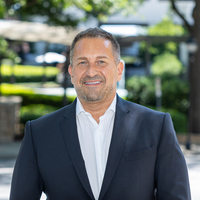
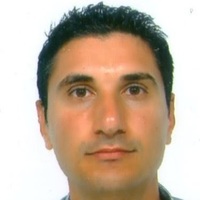


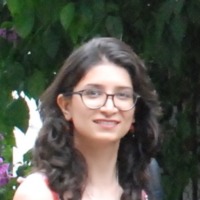
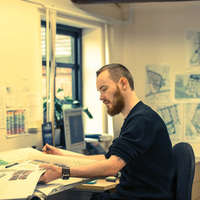



Uploads
Research projects (ongoing) by DENI RUGGERI
This workshop aimed at developing a vision for the future of Zingonia, one of Italy’s only new towns. The focus was Zingonia’s center, Piazza Affari. In the vision of its original planners, this urban node was to serve as a center of commerce. Today, it is drug dealing to constitute the most visible commercial activity. All around, a landscape of neglect awaits a new narrative, and the workshop wanted to contribute to such vision by addressing the need for:
• Sustainability, both in ecological and socio-economic terms
• Multi-ethnicity and multiculturalism
• Inclusiveness/democracy
• Innovation and
• Identity and sense of place
The final product was a series of interventions and initiatives aimed at the requalification and re-invention of this important part of Zingonia’s public realm. The emphasis was placed on the development of “seeds for change” that built on the most positive aspects of today’s Zingonia while also projecting it towards the future.
Workshop structure
The workshop offered students the opportunity to engage in a dialogue with local residents and children living in Zingonia regarding its livability, identity, and how the landscape is used and appreciated. Methods included observations of use patterns and traces, a photographic investigation of the Zingonia landscape, a community survey and informal focus groups with various groups.
After visits to Milan's historic centers, and old and new housing developments (QT8, Porta Nuova, Milanofiori) students worked in a workshop setting toward a vision for the future of the city. Specific interventions on sites chosen amongst the most significant, loved or those in need of improvement and redevelopment will illustrate this vision. Particular emphasis was given to the public realm of Piazza Affari, Zingonia’s heart and to the physical links to this important community node.
The document synthesizes the work of the students involved:
University of Oregon
Roxanne Robles
Norwegian University of Life Sciences (NMBU)
Kristin Moxnes
Tina Karlsvik
Universita di Bologna
Andrea Conti
Irene Frassoldati
Elena Melegari
Lucia Moretti
Alessandro Pacini
Stefano Politi
ENJOY!
The Eugene-Springfield metropolitan area and its transit system was the object of our investigation. Using Geographic Information system and Space Syntax software, we identified 17 bus stops having the most potential in terms of livability, which includes considerations of connectivity to other modes of transportation, mix of land uses surrounding the transit stop, and other traditional environmental qualities usually associated with sustainable places. The transit nodes were analyzed using an audit, a systematic test similar to those used by policy makers and communities to assess neighborhood walkability, which was expanded to include both quantitative and qualitative measures of livability.
The effectiveness and wording of each type of question was carefully tested and refined thanks to two separate pilot tests. The data collected through the audit was later standardized and merged into an index, a value representing the overall livability of the 17 bus stops audited. Despite minor difference across raters, the methodology proved effective in measuring and comparing livability across a variety of sites, and in illustrating their performance with regard to the environmental qualities tested.
Talks by DENI RUGGERI
Papers by DENI RUGGERI
This workshop aimed at developing a vision for the future of Zingonia, one of Italy’s only new towns. The focus was Zingonia’s center, Piazza Affari. In the vision of its original planners, this urban node was to serve as a center of commerce. Today, it is drug dealing to constitute the most visible commercial activity. All around, a landscape of neglect awaits a new narrative, and the workshop wanted to contribute to such vision by addressing the need for:
• Sustainability, both in ecological and socio-economic terms
• Multi-ethnicity and multiculturalism
• Inclusiveness/democracy
• Innovation and
• Identity and sense of place
The final product was a series of interventions and initiatives aimed at the requalification and re-invention of this important part of Zingonia’s public realm. The emphasis was placed on the development of “seeds for change” that built on the most positive aspects of today’s Zingonia while also projecting it towards the future.
Workshop structure
The workshop offered students the opportunity to engage in a dialogue with local residents and children living in Zingonia regarding its livability, identity, and how the landscape is used and appreciated. Methods included observations of use patterns and traces, a photographic investigation of the Zingonia landscape, a community survey and informal focus groups with various groups.
After visits to Milan's historic centers, and old and new housing developments (QT8, Porta Nuova, Milanofiori) students worked in a workshop setting toward a vision for the future of the city. Specific interventions on sites chosen amongst the most significant, loved or those in need of improvement and redevelopment will illustrate this vision. Particular emphasis was given to the public realm of Piazza Affari, Zingonia’s heart and to the physical links to this important community node.
The document synthesizes the work of the students involved:
University of Oregon
Roxanne Robles
Norwegian University of Life Sciences (NMBU)
Kristin Moxnes
Tina Karlsvik
Universita di Bologna
Andrea Conti
Irene Frassoldati
Elena Melegari
Lucia Moretti
Alessandro Pacini
Stefano Politi
ENJOY!
The Eugene-Springfield metropolitan area and its transit system was the object of our investigation. Using Geographic Information system and Space Syntax software, we identified 17 bus stops having the most potential in terms of livability, which includes considerations of connectivity to other modes of transportation, mix of land uses surrounding the transit stop, and other traditional environmental qualities usually associated with sustainable places. The transit nodes were analyzed using an audit, a systematic test similar to those used by policy makers and communities to assess neighborhood walkability, which was expanded to include both quantitative and qualitative measures of livability.
The effectiveness and wording of each type of question was carefully tested and refined thanks to two separate pilot tests. The data collected through the audit was later standardized and merged into an index, a value representing the overall livability of the 17 bus stops audited. Despite minor difference across raters, the methodology proved effective in measuring and comparing livability across a variety of sites, and in illustrating their performance with regard to the environmental qualities tested.